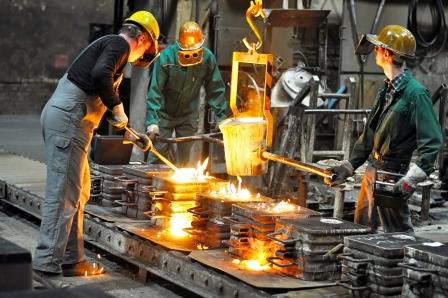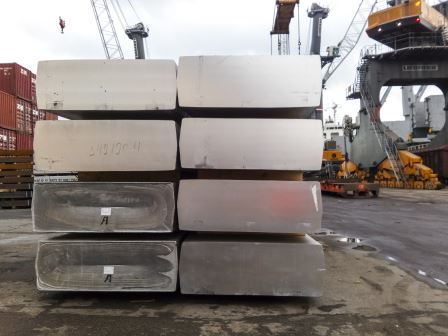 The progress of trade deal, Chinese inventory levels and economic stimuli programs and global economic outlook would largely guide the direction of steel.
The progress of trade deal, Chinese inventory levels and economic stimuli programs and global economic outlook would largely guide the direction of steel.
As per the World Steel Association outlook, global steel demand is expected to grow moderately during this as well as the next year in tandem with a slowing global economy.
The agency foresees an increase in global steel demand by 1.3 percent in 2019 and 1 percent in the next year due to robust Chinese demand amid government’ economic stimuli.
There are reports that uncertainties surrounding trade policies between the world’s top two economies, Chinese economic deceleration, sluggish manufacturing growth, and slowing global economy had an adverse impact on global metal prices.
However, steel futures in the benchmark Shanghai Futures Exchange (ShFE) platform currently trading at near multi-month high.Steel is the world’s second most used material after cement and prices of the commodity has been in the upside trajectory from the beginning of 2016 till the end of 2018.
This was due to worries over supply squeeze from the top producer China amid their plan of cutting down the excess capacity of heavy industries.
China is the leading producer and consumer of steel, and demand and supply from the country largely influence the global steel prices.
Steel output from China is still higher. Steel mills have ramped up operations due to liberal production policies by the government and higher profit margins.
The demand is also higher compared to the previous year as inventory levels at mills and traders are reportedly low despite increasing output.
Chinese government typically imposes production restrictions on heavy industries like steel mills in winter due to environmental issues, but this year’s curbs were lenient compared to last year.
The country has produced a total of 231.07 million tonnes of steel in the first three months of this year, up 9.9 percent when it compared with the same period last year.
It is also expected that China could continue with higher output in the coming months too, supported by higher demand.
Amid slow industrial growth, there is widespread optimism that the country will announce more economic stimulus measures that could boost demand for commodities like steel.
Recently, Chinese officials promised broad policy changes to prevent economic slowdown and boost growth signalling fresh stimulus actions from the country.
At the same time, the ongoing trade dispute with the US has adversely affected the Chinese manufacturing sector and apparently the demand for metal commodities.
The latest data show that profits of Chinese industrial firms have slumped sharply hinting the trade war has adversely hit their economy.
The trade dispute which started in July 2018 has not only affected the Chinese economy but also roiled the global supply chain and darkened the global economic sentiments.
IMF recently cut their global growth forecast to 3.3 percent from its earlier expectation of 3.5 percent. This is the lowest expansion since January 2016.
The agency also hints that the growth rate would ease further due to tariffs tensions and the UK’s potentially disorderly exit from European Union.
Looking ahead, the progress of trade deal, Chinese inventory levels and economic stimuli programs and global economic outlook would largely guide the direction of steel.
A positive deal on trade talks is likely to prompt traders to bet on metals again and this could take price further higher. On the domestic side, apart from the overseas factors a volatility in local currency also has an impact on prices.
First Published in Moneycontrol.
Posted: May 2019.








